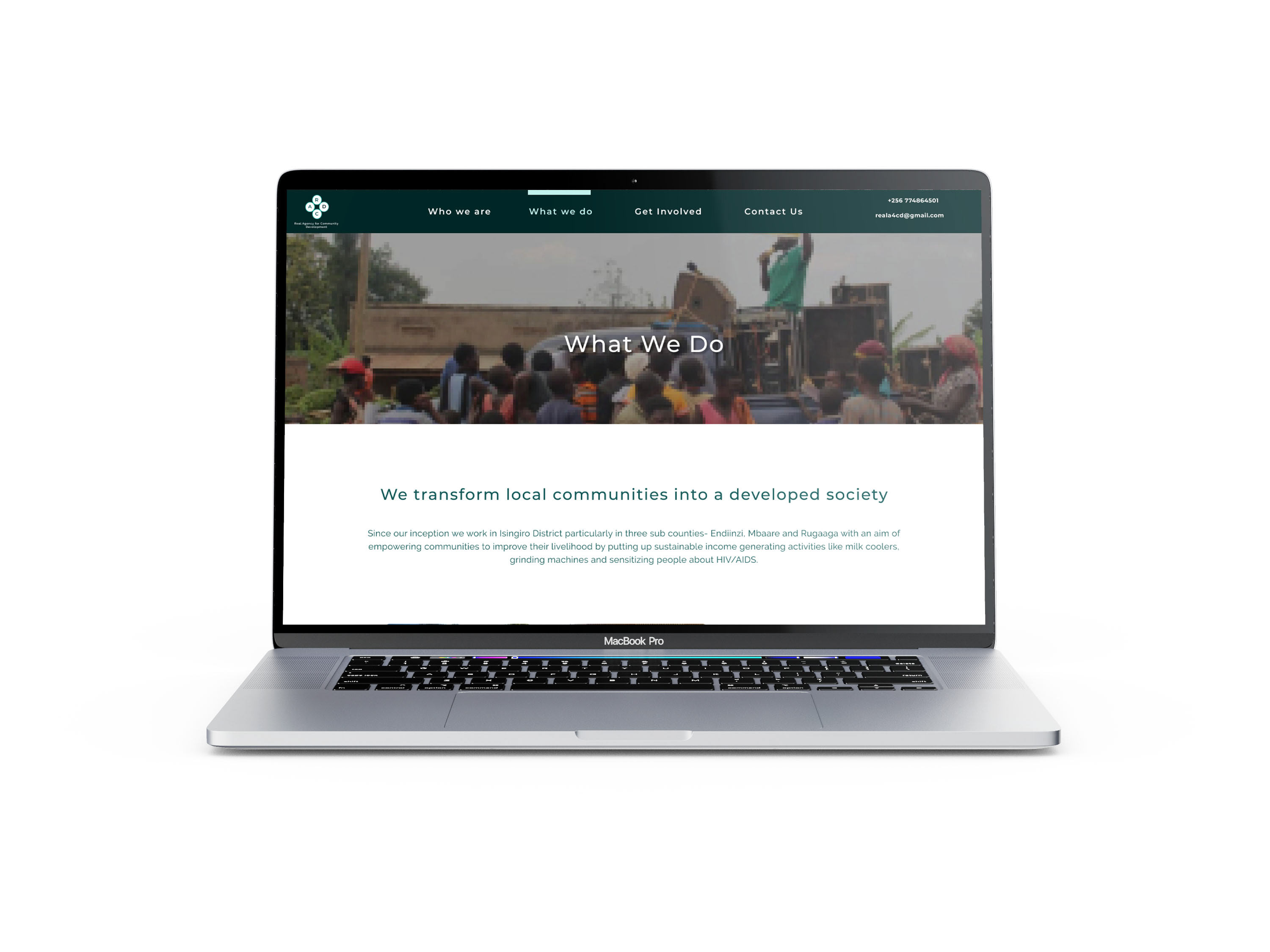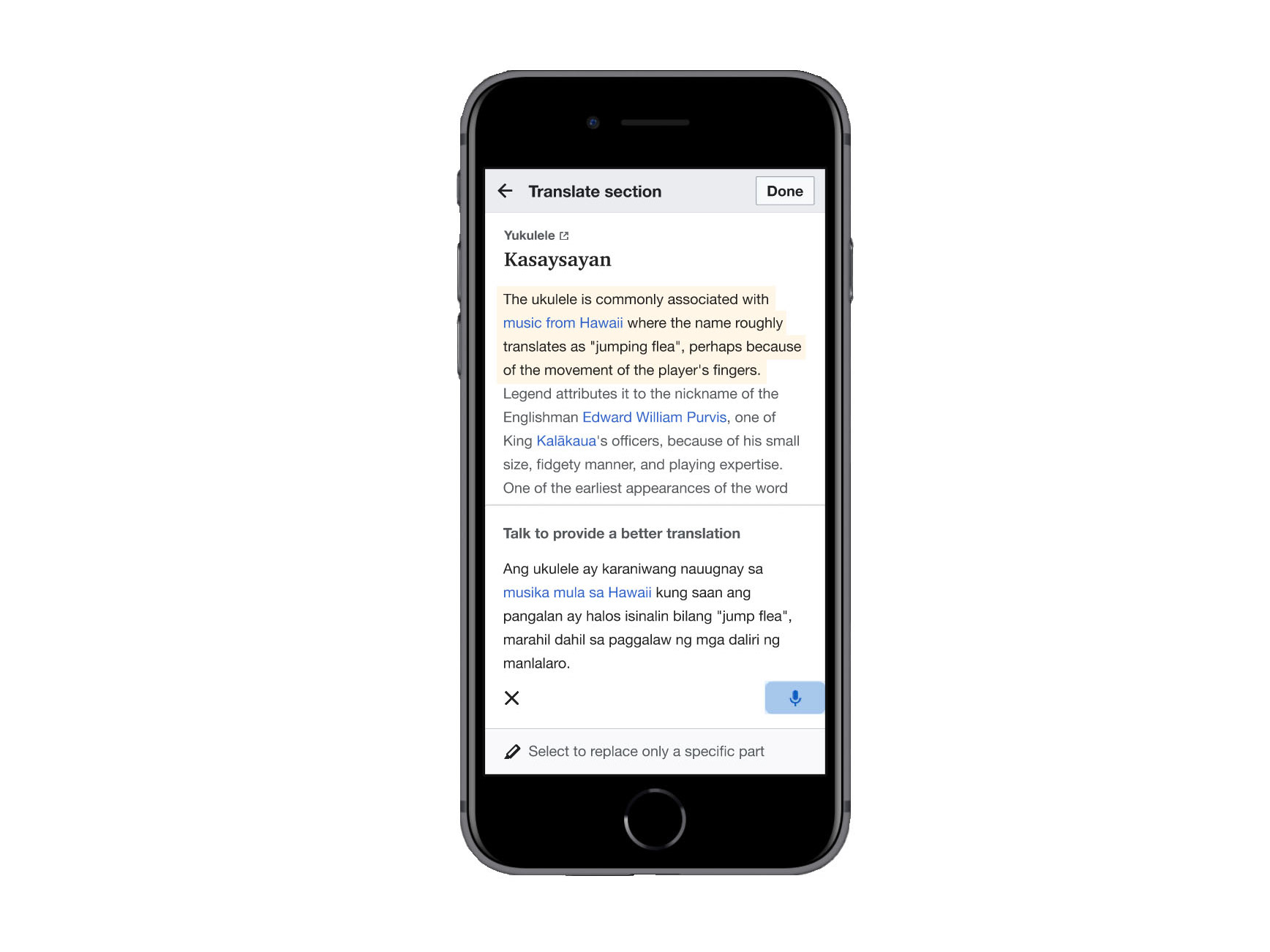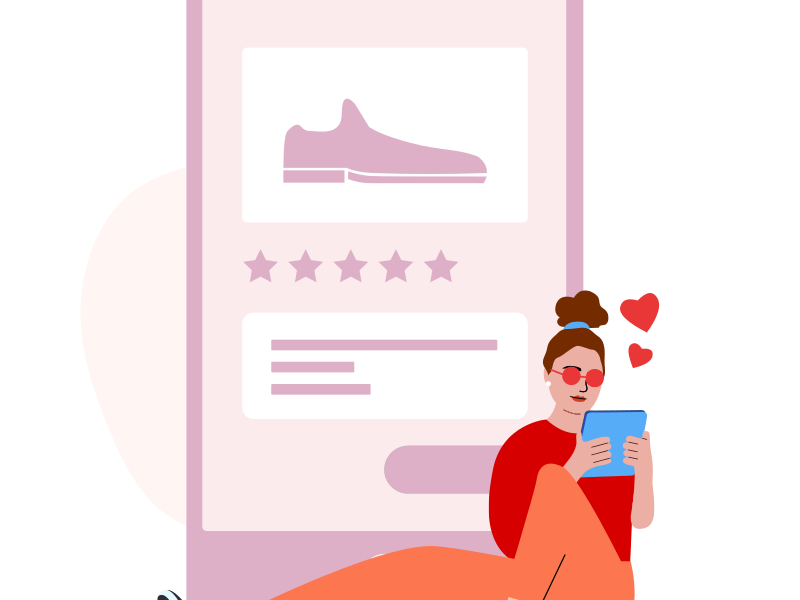PROBLEM: Many students or professionals who take my classes have similar concerns of how to transition into a full-time UX research career regardless of their backgrounds. My stakeholder- a UX career coach wishes to design a product that helps them make this switch more comfortably.
GOAL: Conduct generative research to suggest a minimum viable product that will assist aspiring candidates from creative, industrial and academic fields to begin transition into UX research. How might we be able to bridge the disconnect between job seekers and recruiters?
DURATION: 1 month
TEAM: 2 people- Myself (UX Researcher) and Michele (Client/Project Manager)
Mind Map
I picked out the most prominent ideas surfacing in the mind map above, to represent them in the form of clear classifications. My stakeholder, Michele and I decided that these would be fairly rough categories until we find specific examples of concerns/frustrations or anxieties expressed by actual job seeking or transitioning candidates.
Testing the Hypothesis
1. Firstly, I researched most widely used social media forums/workspaces to find out the most pressing concerns, queries and frustrations of job seekers
2. Secondly, I identified what recruiters had to say about the things they considered important in an ideal candidate for a user research role.
3. Next, I grouped my observations into 5 distinct categories: Self-Assessment, Education, Experience, Networking, Position & Presentation.
Affinity Map
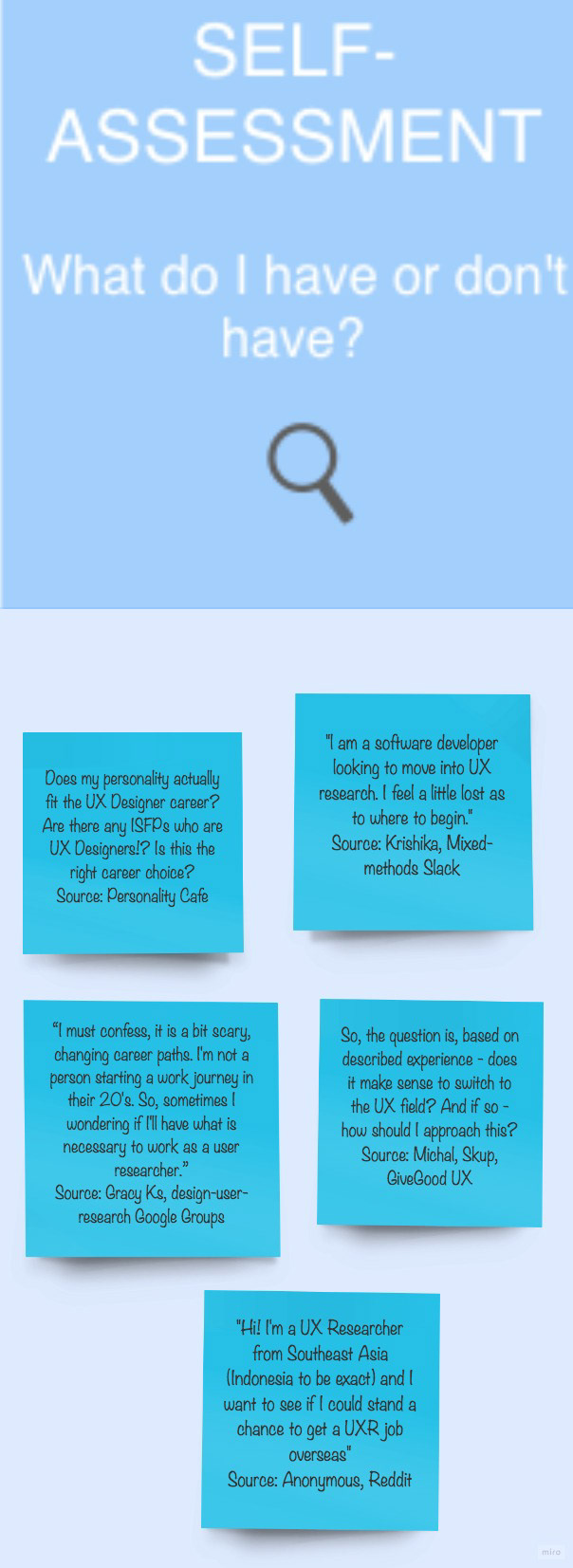
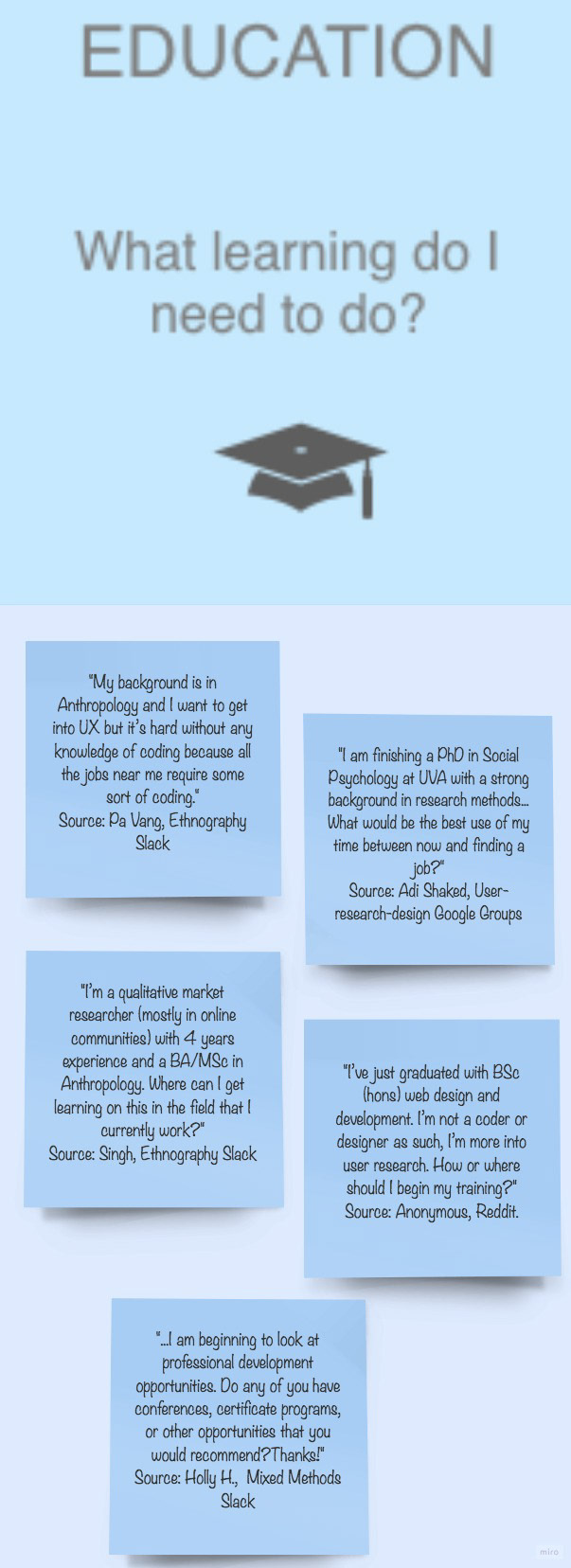
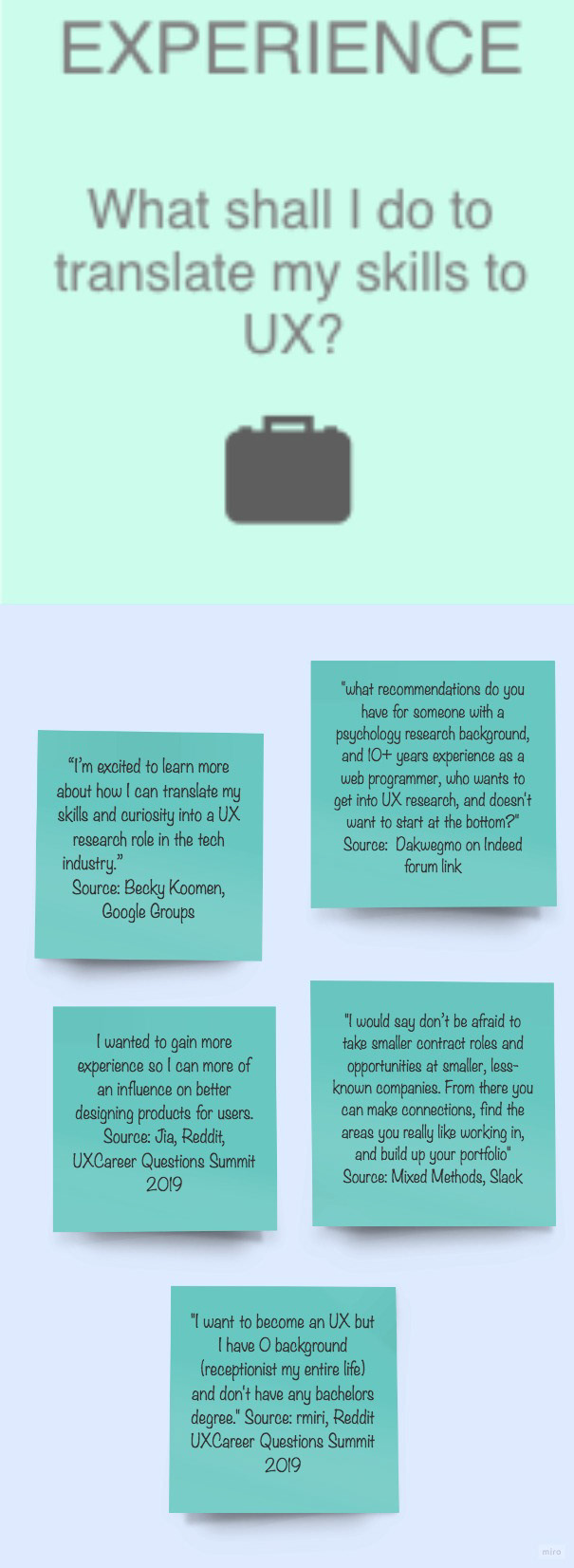
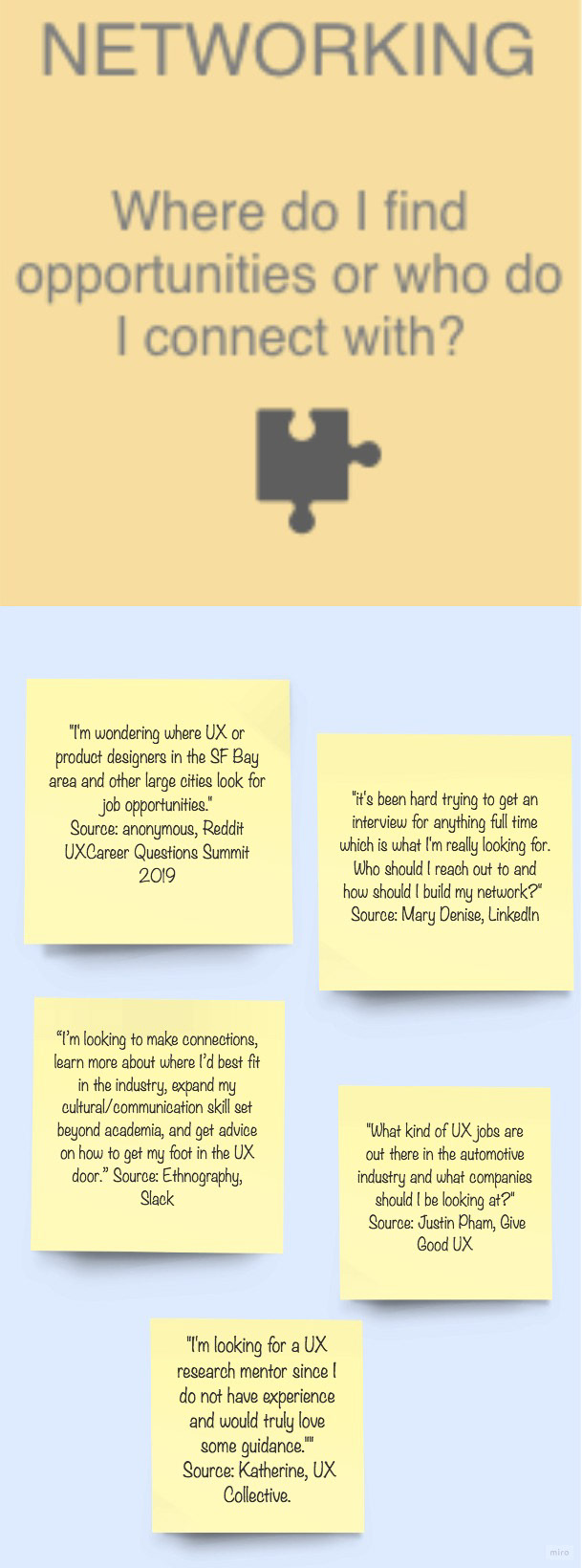
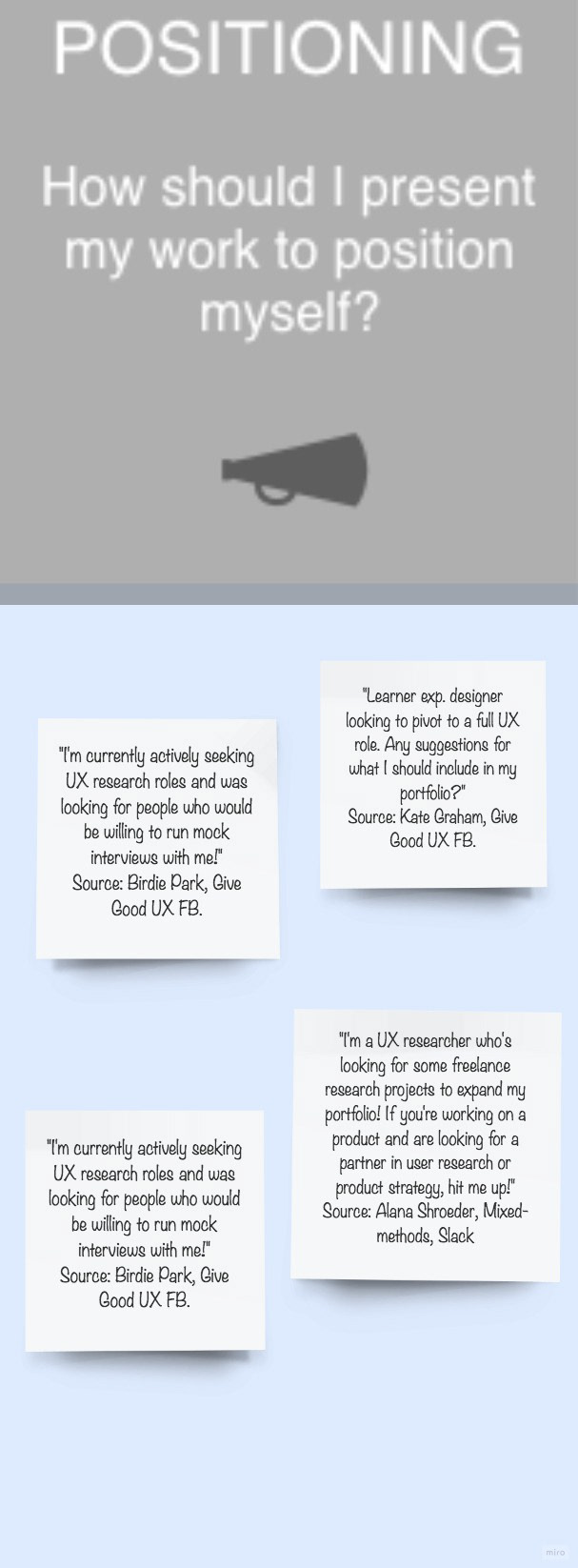
Analysis
Clearly, more than 70% responders who are consumers of knowledge from a UX bootcamp similar to Michelle's find it very difficult to make a transition to UX research or design industries. While the survey showed that most job seekers have the translatable skills and knowledge, they lacked substantial UX industry specific experience. Additionally, my safari research strategy across social media and interactions with job seekers enrolled in bootcamps revealed that there was a dire need of continued instruction and guidance on combining a set of translatable skills into applicable UX design projects. Another challenge that was evident was trade-specific vocabulary. Not everyone really understood the meaning of terms that are so easily misunderstood, such as A/B testing, design thinking and empathy mapping vs. storyboarding.
A Potential MVP Solution
Upon sharing these insights with Michelle, she decided that an ideal mvp (minimum viable product) to prepare current UX Design students/prospective job seekers was an app like Quizlet or simply a digital list of words that would first and foremost clarify the differences between often confused and misunderstood terms. Next, she would organize a series of webinars and workshops focussing on using a combination of research methods to solve a design problem. The students could subscribe to a paid enrollment for a workshop on each project or a set of projects. This way, she felt convinced that she could provide more focused guidance to her students.
